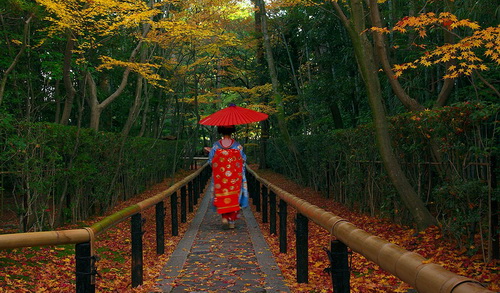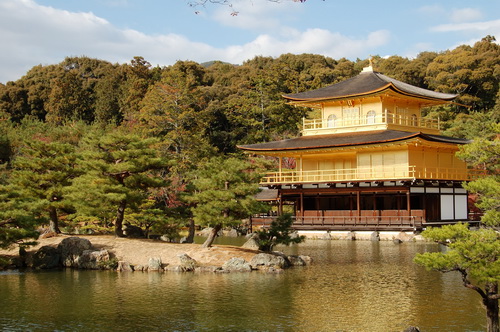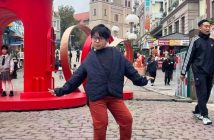This sponsored blog post has been brought to you by Country Holiday.

Japan has the distinction of being the only country I have visited numerous times. Of Japan’s many cities, Kyoto stands out. The former capital of Japan, Kyoto was the center of politics and culture for over 1,000 years. Temples and shrines that were built during this period remain. Standing side-by-side with its historical landmarks are high-rise buildings, shopping and great food, all in a city that marries ancient and new with amazing harmony.
Temples, Gardens and Zen
One of the best ways to enjoy and appreciate the atmosphere of Kyoto is to walk. Many old houses and temples line the streets. My personal favorite is the Philosopher’s Walk, a quiet & meditative pathway that winds its way along a canal lined with lovely shrubs and trees. The walk passes by many temples, shrines and gardens.
Shinto and Buddhism are Japan’s two major religions. Temples are the places of worship in Japanese Buddhism while Shinto shrines are dwellings for Shinto gods. Every Japanese town has at least one temple or shrine, while larger cultural cities like Kyoto have thousands. Temples and shrines have their distinct style and architecture depending on the era they were built. Most are located in scenic surroundings and a visit provides an insight into Japan’s past and present.
Japanese gardens reflect the people’s love for nature and the beauty of these are best appreciated in Kyoto. Gardens are usually of 2 types – shrubs and rock. The dry rock gardens consist of stones, sand and gravel placed in a certain pattern. One of my favorite activities when visiting Kyoto is to sit quietly in a corner of the temple’s rock garden. Staring at the rock formations is supposed to alleviate one to eventually reach a state of zen. I have yet to achieve that, though the peace, serenity and beauty of the surroundings more than make up for it.

Onsens and Ryokans
A quintessential Japanese experience is a bath in one of the many onsens (natural hot spring) across the country. There are many types of hot springs, distinguished by the minerals dissolved in the water which provide different health benefits. Onsens may belong to a ryokan (traditional Japanese dwelling) or public bath houses. To further the Japanese experience, a stay at a ryokan with an onsen is highly recommended. A ryokan stay is an opportunity to experience traditional Japanese lifestyle, hospitality and etiquette – sleeping on futon beds on tatami (straw mat) floors, taking an onsen bath, negotiating the different footwear and dress for each room and finally, tasting exquisite kaiseki ryori (Japanese haute cuisine).
Kyoto’s attractions go beyond, temples, shrines, onsens and ryokans. Traditional theatre (kabuki), arts and crafts like pottery, textiles, festivals and cuisine are some of the many highlights of this amazing city. Kyoto is often known as the ‘heart’ of Japan.
Written By: Sharon Heng
Trip organized by Country Holidays.
To learn more about tours and packages, please email beijing@countryholidays.com.cn or call (010) 8587-9263 and log onto: www.countryholidays.com.cn.

This sponsored blog post has been brought to you by Country Holiday.
Photos courtesy of Country Holiday



